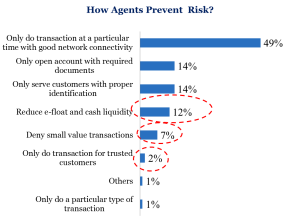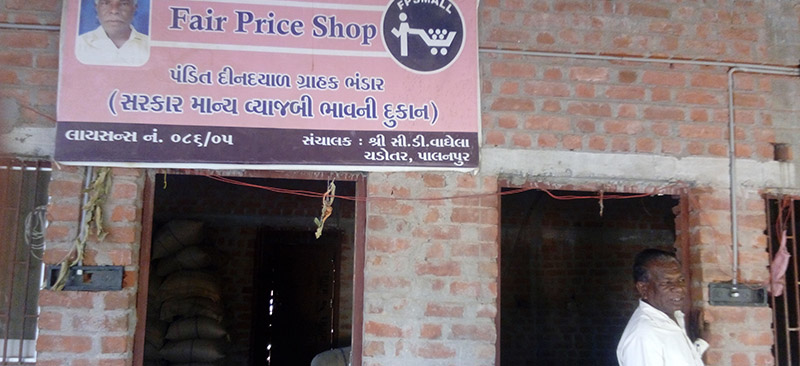The payment system in any country needs to pass the litmus test of safety, security, soundness, efficiency, and accessibility. In order to address all these, payment systems have evolved from barter to currency, to digital systems. We are witnessing enormous change in the payment systems, disrupting the monopoly of physical/paper-based system by electronic ones.
There are basically two types of payment systems:
1. Paper-based, like cheques and drafts; and
2. Electronic payments, like ECS, NEFT, and RTGS; and payment systems extensively used by people at large, such as PPI, mobile banking, and ATM/POS.
Paper Based System
Electronic Payments – Retail Electronic Clearing
It started with ECS (Credit) in 1990s and has evolved over a period of time as captured in the diagram below.
 NECS leverages the Core Banking Solutions (CBS) of member banks, facilitating all CBS bank branches to participate in the system, irrespective of their location across the country. Around 31 million ECS (Credit) transactions leading to Rs. 828 billion (US$13 billion) were processed in the first three quarters of FY 2015/16.
NECS leverages the Core Banking Solutions (CBS) of member banks, facilitating all CBS bank branches to participate in the system, irrespective of their location across the country. Around 31 million ECS (Credit) transactions leading to Rs. 828 billion (US$13 billion) were processed in the first three quarters of FY 2015/16.
The popular Electronic Fund Transfer (EFT) system, introduced in the late 1990s to enable account-to-account transfers, was replaced by one-to-one NEFT system in November 2005. Available on all banking days from 8 AM to 7 PM, the NEFT system provides 12 batch settlements at hourly intervals, thus enabling near real-time transfer of funds. Other unique features, including acceptance of cash for originating transactions; initiating transfer requests without any minimum or maximum amount; facilitating one-way transfers to Nepal; providing confirmation of the date/time of credit to the account of the beneficiaries, etc., were also made available with the NEFT system. The NEFT accounts for a lion’s share (91%) of transactions in terms of value, with close to Rs. 58 trillion (US$892 billion) from 886 million transactions, by the end of the first three quarters of 2015/16.
The establishment of the National Payments Corporation of India (NPCI) to act as an umbrella organisation, in early 2009, is considered to be a landmark for retail payments in India. The NPCI has taken over National Financial Switch (NFS) from the Institute for Development and Research in Banking Technology (IDRBT). The NPCI launched the Immediate Payment Service (IMPS) in November 2010, which allowed instant 24/7 inter-bank fund transfer through the Internet, mobile, and ATM at a very low cost (Rs. 1.50 per successful transaction, or about two US cent) using the NFS switch. Though IMPS accounts for only Rs.1.08 trillion (US$16.6 billion) from 148 million transactions as of December 2015 (FY16), it has come as a boon for small value transactions.
Overall, the volume of transactions handled by India’s retail electronic clearing system has been growing by leaps and bounds, and touched Rs. 64 trillion (US$1 trillion) in 2.2 billion transactions by Q3 2015/16. The IMPS has seen a meteoric rise in the 5 years of its existence. In the month of December 2015 alone, IMPS processed over 20 million transactions handling Rs. 142 billion (US$2.2 billion). This has taken IMPS way ahead of money remittance services of Department of Post, which have been in existence since the late 18th century. The last published data of 2013/14 indicates that Rs.122 billion (US$1.9 billion) were remitted by DoP through Inland Money Orders – compared to Rs.96 billion (US$1.5 billion) transacted through IMPS for the same period and there was then a fivefold increase in value transacted through IMPS the following year.
Electronic Payments – RTGS
Real Time Gross Settlement (RTGS), introduced in 2004, is a funds transfer systems where transfer of money takes place from one bank to another on a “real time” and on “gross” basis. RTGS is primarily meant for large value transactions. It processes customer transactions above Rs.200,000 (US$3,076) and is available between 9 AM and 4.30 AM on all the banking days. The RTGS is the largest payment system in India in terms of value and had handled Rs.729 trillion (US$11.2 trillion) in 72 million transactions by Q3, FY 2016.
The table below has captured the data of last FY and till Q3 of the current FY for various payment systems
 Other Payments System
Other Payments System
Of late, we have seen other innovative payment systems (like closed wallets, PPI, eCom, etc.) propelled by the environment and changes in the regulations. Pre-paid instruments (PPI) facilitate purchase of goods and services against the value stored on these instruments. The PPIs can be issued in the form of smart cards, magnetic strip cards, Internet accounts, Internet wallets, mobile accounts (issued by banks), mobile wallets, paper vouchers, etc. With 68.67 million transactions in December 2015, this has generated a throughput of Rs.44 billion (US$682 million) – an average ticket size of Rs. 646 (US$10).
With the ever increasing penetration of mobile phones, RBI brought out a set of operating guidelines on mobile banking for banks in October 2008, under which only banks were permitted to offer mobile banking. With almost all banks promoting mobile banking, the latest data as of Q3,FY16 shows that a significantly lower number (39 million) of mobile banking transactions resulted in throughput of more than 11 times (Rs. 490 billion – US$7.5 billion), of PPI.
Debit cards in India have overtaken credit cards. As of December 2015, there are more than 630 million debit cards as against 22.75 million credit cards. With about 193,000 ATMs and 1.25 million POS, debit cards are generating 816 million transactions per month comprising Rs.2.3 trillion (US$35 billion) in retail payments.
 The last 3 years’ trends clearly show the direction of the market ― less and less paper, and more and more electronic payments ― with all electronic categories growing both in volume and value terms. The electronic clearing comprising of ECS, NEFT and IMPS are growing at the highest rate. With this and the new Payment Banks, there will be ever-increasing focus on electronic payments. These will be accessible to a large section of society at remarkably low cost. Since June 2015, electronic transactions of EFT/NEFT has surpassed paper-based, in volume terms. Even in value terms, this has overtaken beginning September 2015, highlighting a clear trend towards adoption of electronic payments over paper-based payments.
The last 3 years’ trends clearly show the direction of the market ― less and less paper, and more and more electronic payments ― with all electronic categories growing both in volume and value terms. The electronic clearing comprising of ECS, NEFT and IMPS are growing at the highest rate. With this and the new Payment Banks, there will be ever-increasing focus on electronic payments. These will be accessible to a large section of society at remarkably low cost. Since June 2015, electronic transactions of EFT/NEFT has surpassed paper-based, in volume terms. Even in value terms, this has overtaken beginning September 2015, highlighting a clear trend towards adoption of electronic payments over paper-based payments.
The Future of India’s Payments System
Looking at the trends, we can be sure that electronic payments is the future and that digital will redefine the payment systems of years to come. This will be significantly more pronounced with the entry of 11, resource-rich, technology-focused payment banks in 2016/17. Based on our experience, these are some of the broad trends that will redefine payment systems in India:
a. Inter-operability: With a myriad of payment service providers servicing millions of customer accounts, the time is ripe to unleash network effects through inter-operability between various digital channels.
b. Proliferation of acceptance networks: As of now, India has about 1.2 million POS terminals. This needs to increase rapidly (some estimates suggest it should expand to around 20 million), given India’s population, geography, number of merchants, etc.
c. Government initiatives: The Government of India has been at the forefront in the drive to encourage digital payments. Furthermore, it is working to use direct benefit transfers for its various schemes and thus deliver entitlements directly into beneficiaries’ accounts, identified and authenticated by the Aadhaar system. Buoyed by the success of DBT for LPG, the Union Budget 2016 announced trial of DBT for fertilisers.
d. Customer convenience and affordability: With a critical mass of 50 million transactions per month happening over mobile wallets – increasingly in rural areas of country, the continued focus on convenience (without losing sight of security and risk mitigation) will be essential. There are very real concerns about client service and protection that should be addressed urgently. With this, and a low-cost 24X7 backbone offered by IMPS, the time is ripe to reduce the transaction cost for the customer. This would be something that will be hastened with the entry of new players.
Given various experiments and initiatives in the market, they need to ensure safety and security of transactions, in addition to adding convenience for the customer and affordability for the service provider.


 Around 2/3rd of the customers do not fully understand the terms and conditions of DFS service that they are using. Lack of awareness of service among customers is the largest stated barrier for DFS growth, according to MicroSave’s recent
Around 2/3rd of the customers do not fully understand the terms and conditions of DFS service that they are using. Lack of awareness of service among customers is the largest stated barrier for DFS growth, according to MicroSave’s recent 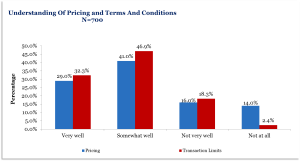 Communication Between Agents, Agent Network Managers, and Banks Needs to Improve
Communication Between Agents, Agent Network Managers, and Banks Needs to Improve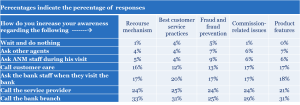 Agents point out that lack of support for them in running the agency is one of the reasons why they do not recommend DFS/bank agency as a business to others.
Agents point out that lack of support for them in running the agency is one of the reasons why they do not recommend DFS/bank agency as a business to others.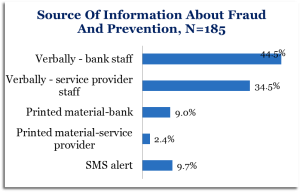 Proper formal communication about the terms and conditions of service is also not complete. Only 68% of all active agents reported having received documents with terms and conditions of service. Poor communication both at the customer as well as at the agent level means that the situation will facilitate external frauds as DFS grows and matures in India.
Proper formal communication about the terms and conditions of service is also not complete. Only 68% of all active agents reported having received documents with terms and conditions of service. Poor communication both at the customer as well as at the agent level means that the situation will facilitate external frauds as DFS grows and matures in India.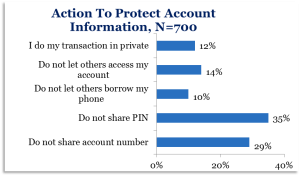 Experienced customers (who have had an account for more than one year) are more aware of the means to protect their account information. More than one-third of all customers interviewed highlighted that they do not share their PIN. But, once again, agents are the most important source of information about methods to protect accounts.
Experienced customers (who have had an account for more than one year) are more aware of the means to protect their account information. More than one-third of all customers interviewed highlighted that they do not share their PIN. But, once again, agents are the most important source of information about methods to protect accounts.